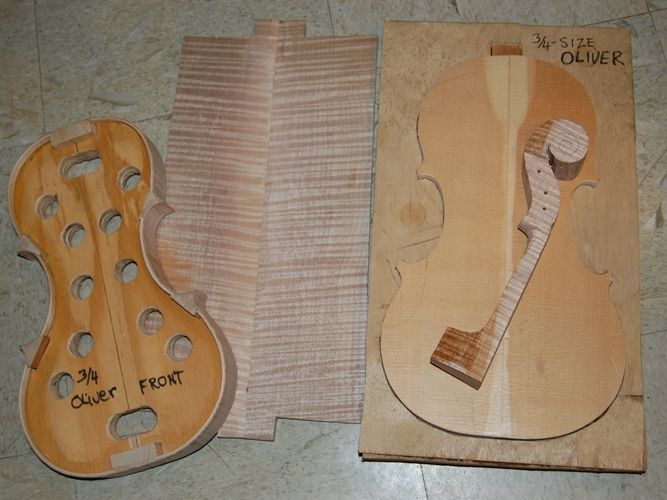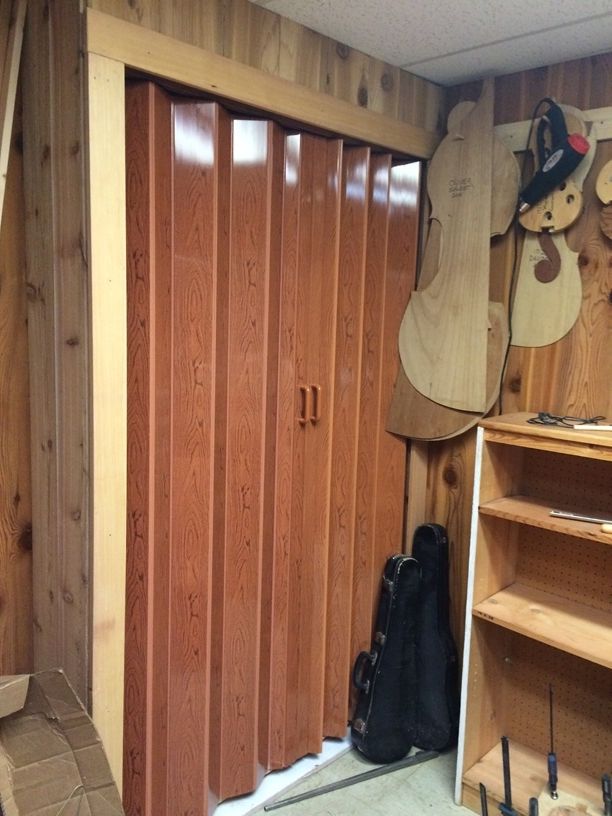3/4-sized Violin On the Way
Fractional-sized Instruments (Rationale and progress report: pictures below.)
Most luthiers will not invest time in fractional sized instruments, on the (usually correct) assumption that the player using a fractional sized instrument is a child, and will soon outgrow the instrument, so the parent or guardian (person footing the bill) will not be willing to pay for a professionally built instrument, knowing that in a few months or a few years, the child will need a full-sized instrument.
That is valid thinking, and completely understandable. But there are two (fairly rare) exceptions:
- The virtuoso player, 10-12 years old who is physically not able to handle a full-sized instrument, but whose skills already exceed the capabilities of most factory-made instruments.
- The adult player with very small hands, and/or upper body mass, for whom a full-size instrument is uncomfortable, but for whom a superior 3/4-sized instrument (for example) would be ideal.
It is not terribly difficult to surpass the quality of most factory made instruments, but people usually don’t want to pay the price of a full-size instrument to buy a fractional size of the same quality, by the same maker. That is not a logical response, because:
- The materials cost exactly the same, and
- The labor involved is nearly exactly the same.
There may be a few hours less labor to make a fractional sized instrument, but the difference is very slight, and the financial risk in building such an instrument on speculation is much greater because the market is so small.
So…What’s a Luthier to Do?
In my case, I intend to go ahead and make them, and see whether they sell. There must be a few players out there who need (or at least prefer) a good 3/4-size violin, but have trouble finding one. I have a friend who makes a few, knowing that usually the targeted customer will be the child-prodigy player, so he only charges 1/2 the price of his full-sized violins, with the provision that if they bring the fractional size violin back, he will give 100% credit toward the purchase of a full-size instrument. That seems to be a good idea, too.
Earlier this year, at a show I regularly attend (Marlyhurst University Musical Instrument Show), an adult player came looking for a 3/4-sized violin. I did not have one in hand, and she would not give me her contact information, so I could not let her know that one is on the way. I can only hope she turns up at the show again next year. Perhaps she will.
But: that experience alerted me to the fact that there is at least a small demand for such instruments. A “niche-market” perhaps.
Simultaneously, there were several violists who came through and were amazed at the volume and tone quality of a tiny (14-inch) viola I exhibited this year. So, I think there really is a market for smaller instruments, provided they give good response.
I just completed another (better) 14-inch viola (see previous posts), so I hope to arm myself with the fractional violin, the small viola, as well as my usual standard-sized instruments, and then start visiting local teachers, so that they can see what it is I produce.
The Beginning (Progress report for the 3/4-size violin)
I began this fractional-size violin a few months ago, but I have been swamped with other responsibilities, so it has hardly progressed at all.
- The ribs are bent and installed,
- The front linings are installed, and
- The garland has been leveled.
- The back plate has been book-matched, but not cut to shape.
- The front plate has been cut to shape, and
- The work-cradle is complete, to hold the plates securely while I carve the arching (outside) and graduations (inside.)
- The neck block has been roughly cut out, but not carved.
We’ll see how it goes from this point forward. I still have a lot of other things going. (Home repairs and remodels, repairs for customers, etc.)

I did build a closet to hold my completed instruments, all in cases. 🙂


That makes the room more usable, and it gets the instruments up off the floor. 🙂
Thanks for looking.

 Follow
Follow
